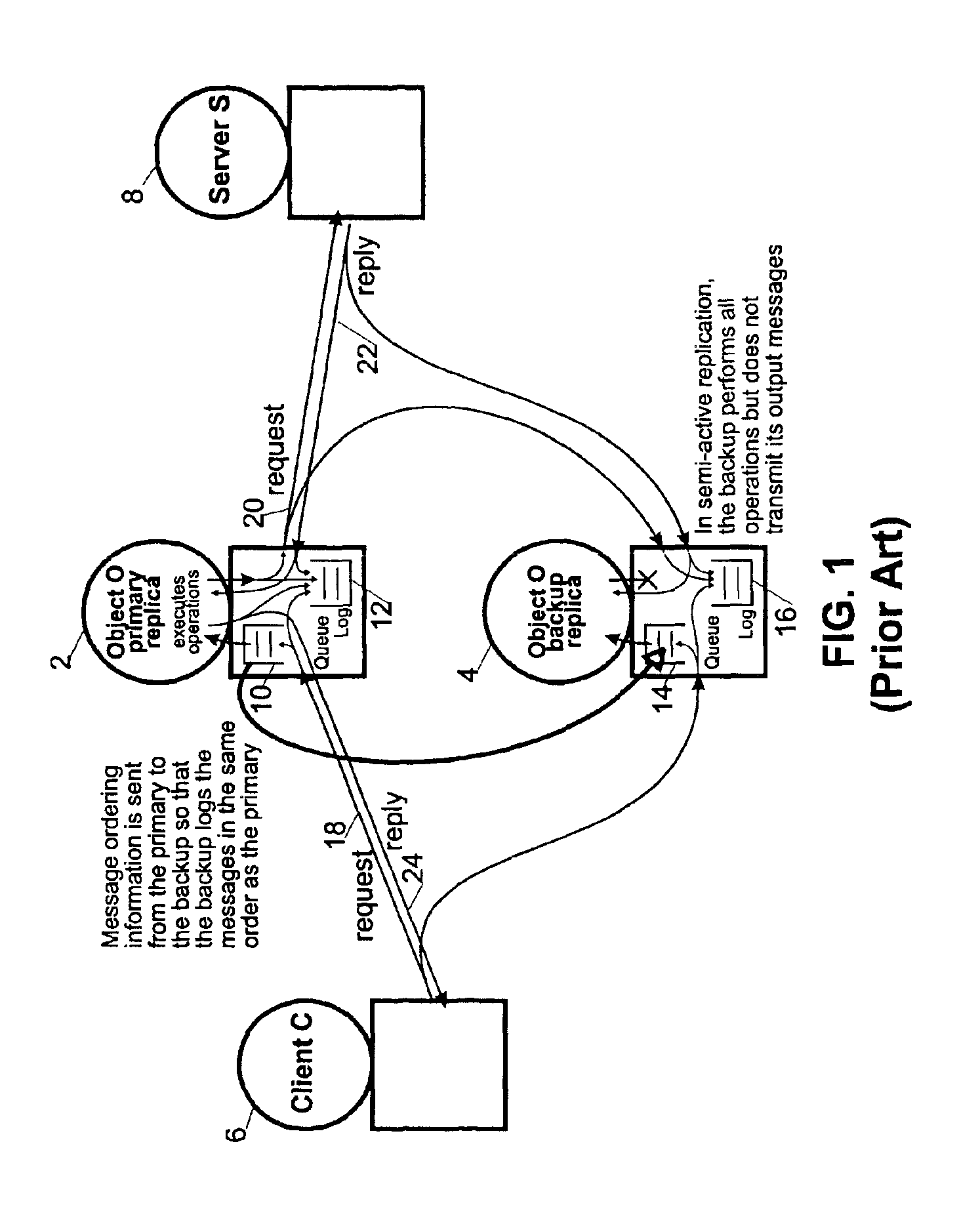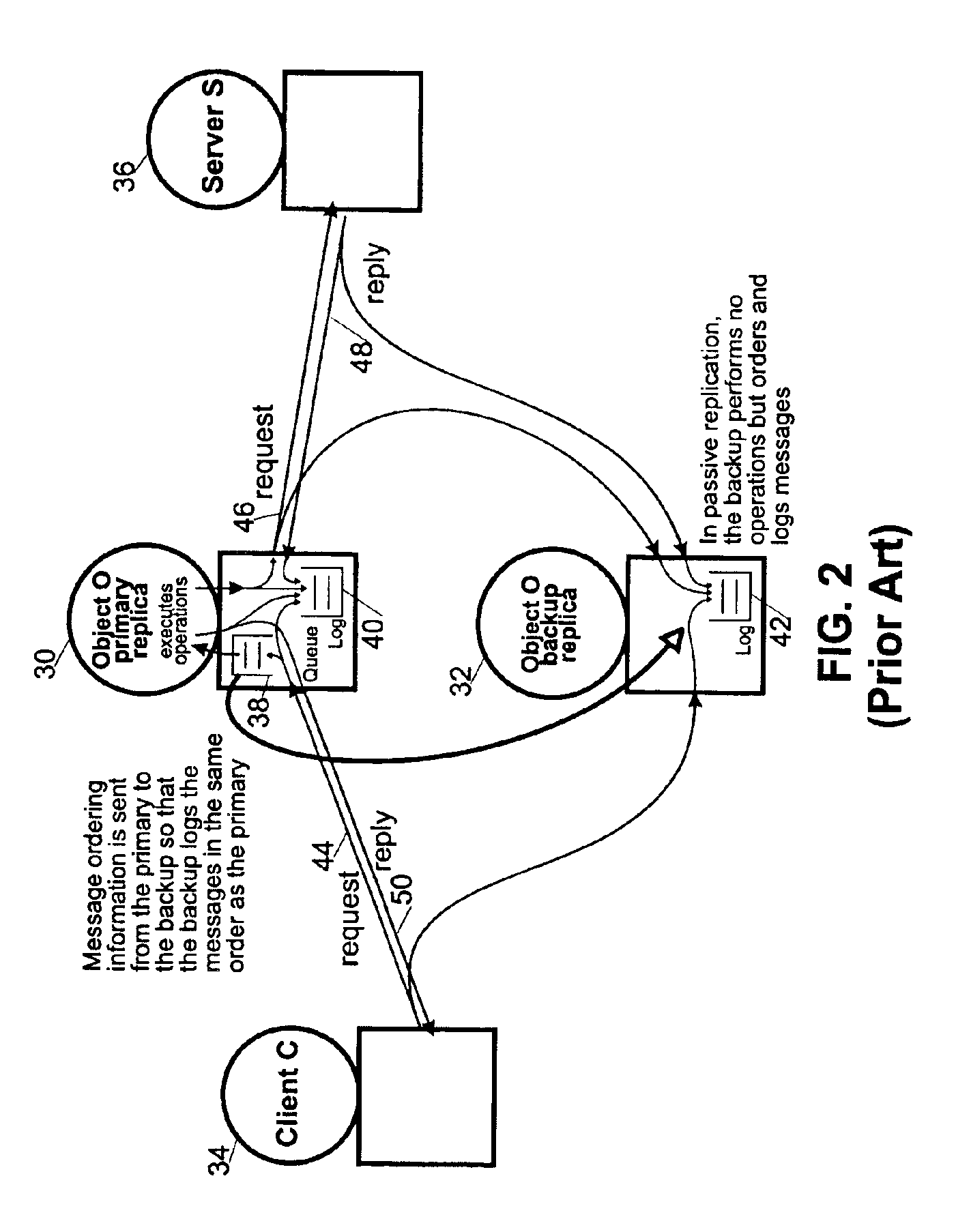Consistent message ordering for semi-active and passive replication
a message ordering and semi-active technology, applied in the field of software-based fault-tolerant computer systems, can solve the problems of inconsistency within the distributed system, corruption of t's state, and return of incorrect results to sb>2/b, and achieve the effect of increasing the end-to-end request/response time and lowering the end-to-end response tim
- Summary
- Abstract
- Description
- Claims
- Application Information
AI Technical Summary
Benefits of technology
Problems solved by technology
Method used
Image
Examples
Embodiment Construction
[0070]The context in which this invention is described is an application program that is replicated for fault tolerance, where the replicas are distributed across multiple computers within a network of computers. The application objects are replicated using semi-active or passive replication, where there is a single primary replica of an object and one or more backup replicas of an object. In this invention the term object is used to refer not only to objects but also to processes, containers, components, memory protection domains or processors.
[0071]The invention is described in terms of a client object that invokes methods of a server object. An object can act as both a client and a server in a multi-tier or peer-to-peer application, where a server also acts as a client and invokes methods of other servers. The terms first object and second object are also used to refer to the client object and the server object. The invention supports replication of both client objects and server...
PUM
 Login to View More
Login to View More Abstract
Description
Claims
Application Information
 Login to View More
Login to View More - R&D
- Intellectual Property
- Life Sciences
- Materials
- Tech Scout
- Unparalleled Data Quality
- Higher Quality Content
- 60% Fewer Hallucinations
Browse by: Latest US Patents, China's latest patents, Technical Efficacy Thesaurus, Application Domain, Technology Topic, Popular Technical Reports.
© 2025 PatSnap. All rights reserved.Legal|Privacy policy|Modern Slavery Act Transparency Statement|Sitemap|About US| Contact US: help@patsnap.com



